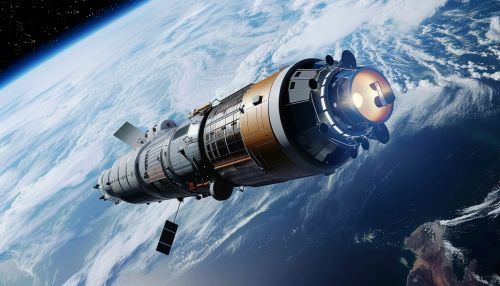Space tourism
Introduction
Space tourism is a form of tourism that involves the travel of individuals beyond the Earth's atmosphere for recreational, leisure, or business purposes. It is a sector of the wider space industry, which includes a range of activities such as satellite telecommunications, space mining, and space manufacturing. Space tourism is a relatively new field, but it is rapidly growing in popularity and significance.


History
The concept of space tourism has been around since the early days of human spaceflight, with the Apollo program and the Space Race sparking widespread public interest in space travel. However, it wasn't until the turn of the 21st century that space tourism became a practical reality.
The first self-funded space tourist was Dennis Tito, an American businessman who in 2001 paid $20 million for a trip to the International Space Station (ISS) aboard a Russian Soyuz spacecraft. This marked a significant milestone in the development of space tourism, demonstrating that it was possible for private individuals to travel to space.
Since then, several other individuals have followed in Tito's footsteps, including Mark Shuttleworth, Greg Olsen, Anousheh Ansari, and Richard Garriott. These trips were all facilitated by the Russian space agency Roscosmos, which has been the most active player in the space tourism market to date.
Current State of Space Tourism
In recent years, several private companies have entered the space tourism market, offering a range of services from suborbital spaceflights to orbital trips and even proposed missions to the Moon and Mars. These companies include Blue Origin, SpaceX, Virgin Galactic, and Space Adventures.
Blue Origin, founded by Jeff Bezos, is developing the New Shepard spacecraft for suborbital space tourism. The spacecraft is designed to carry up to six passengers to an altitude of over 100 kilometers, providing a few minutes of weightlessness and a view of the Earth from space.
SpaceX, founded by Elon Musk, has announced plans to send private individuals on trips around the Moon aboard its Starship spacecraft. The company has also expressed interest in establishing a permanent human presence on Mars, which could potentially include tourism.
Virgin Galactic, founded by Richard Branson, is developing the SpaceShipTwo spacecraft for suborbital space tourism. The spacecraft is designed to carry six passengers and two pilots to an altitude of over 100 kilometers, providing several minutes of weightlessness and a view of the Earth from space.
Space Adventures, a space tourism company that has facilitated trips to the ISS for private individuals, has announced plans to offer lunar missions in partnership with Roscosmos.
Future of Space Tourism
The future of space tourism is expected to be driven by advances in technology, reductions in cost, and increasing public interest in space travel. Several companies are developing new spacecraft and launch systems that could significantly lower the cost of access to space, making space tourism more accessible to a wider range of people.
In addition to suborbital and orbital spaceflights, there are also proposals for other forms of space tourism, such as lunar tourism and even Mars tourism. These would involve longer-duration missions and would require significant advances in space technology and infrastructure.
There are also proposals for the development of space hotels, which would provide accommodations for tourists in space. These could range from modules attached to the ISS to standalone structures in orbit around the Earth.
However, there are also several challenges facing the development of space tourism, including technical challenges, regulatory issues, and concerns about the environmental impact of space travel.
Challenges and Concerns
One of the main challenges facing space tourism is the high cost of access to space. Currently, a trip to space can cost millions of dollars, making it accessible only to a small number of wealthy individuals. However, companies like SpaceX and Blue Origin are working to reduce the cost of space travel through the development of reusable launch vehicles.
Another challenge is the risk associated with space travel. While space tourism companies are working to develop safe and reliable spacecraft, space travel is inherently risky, and accidents can and have occurred.
There are also regulatory challenges associated with space tourism. In many countries, the legal and regulatory framework for space tourism is still being developed, and there are questions about issues such as liability and insurance.
Finally, there are concerns about the environmental impact of space tourism. The launch of spacecraft produces greenhouse gases and other pollutants, and there are concerns about the potential for space debris to accumulate in Earth's orbit.
Conclusion
Space tourism is a rapidly growing field that offers the promise of opening up space to more people than ever before. While there are still many challenges to overcome, the progress made in recent years suggests that space tourism could become a significant part of the space industry in the coming decades.
